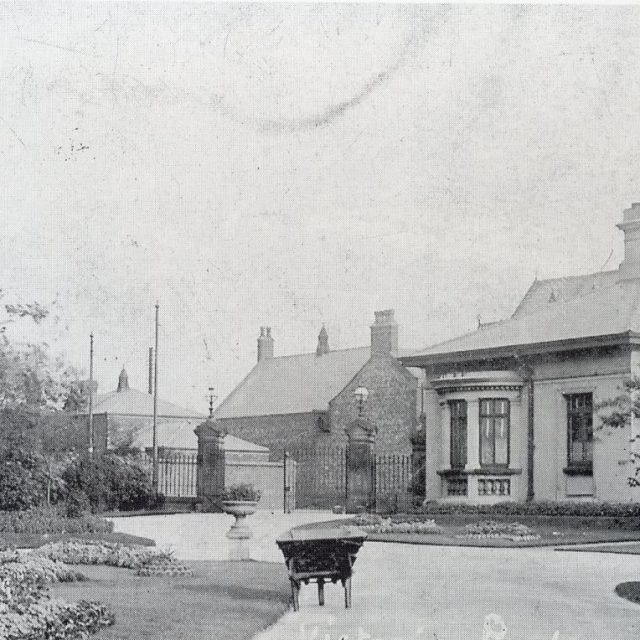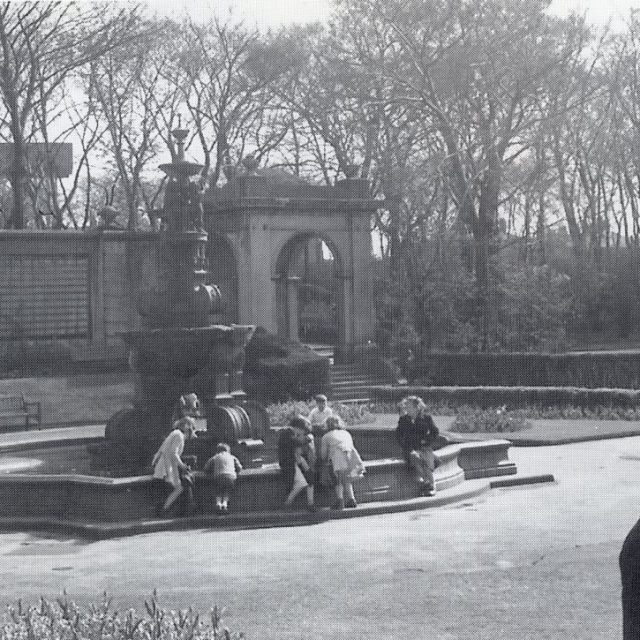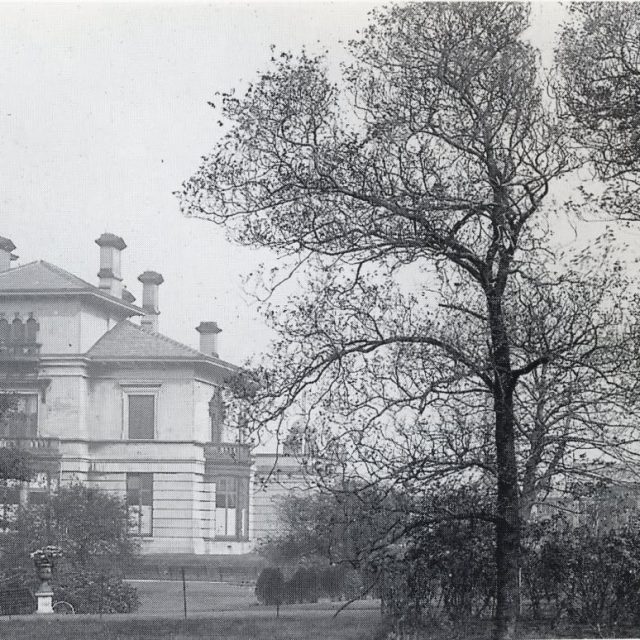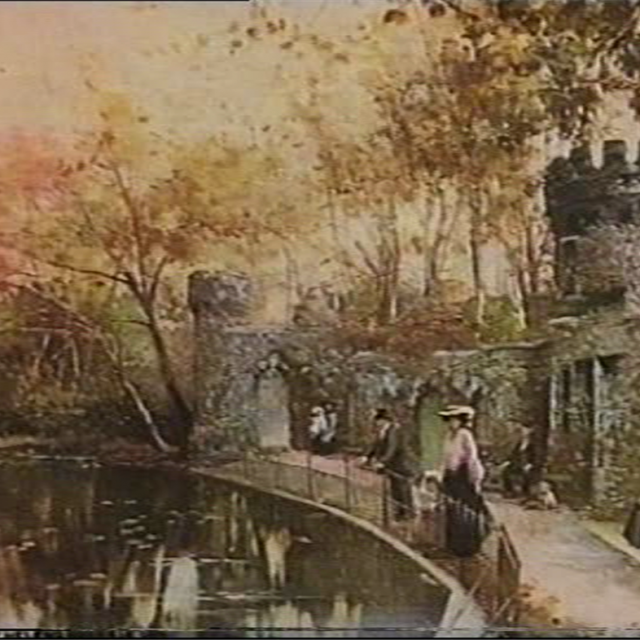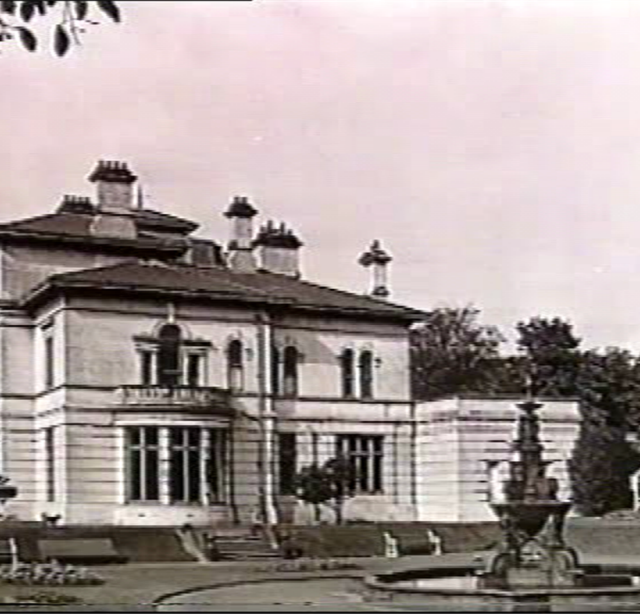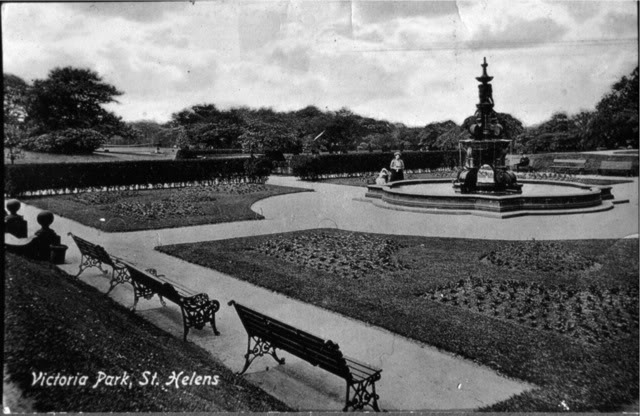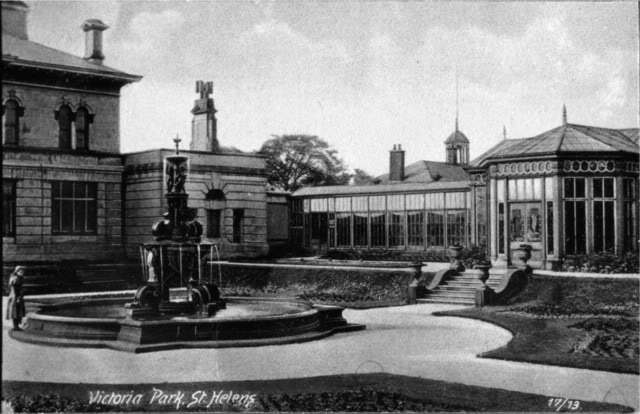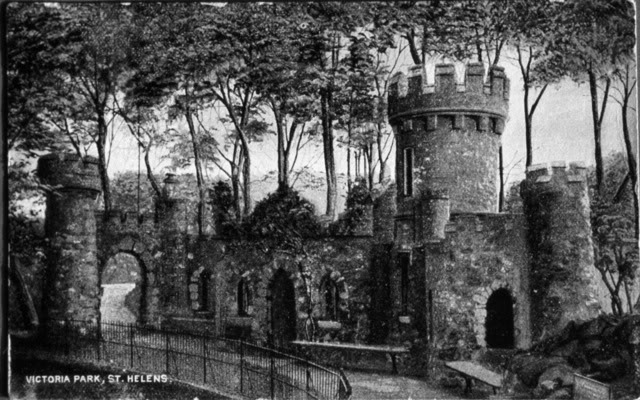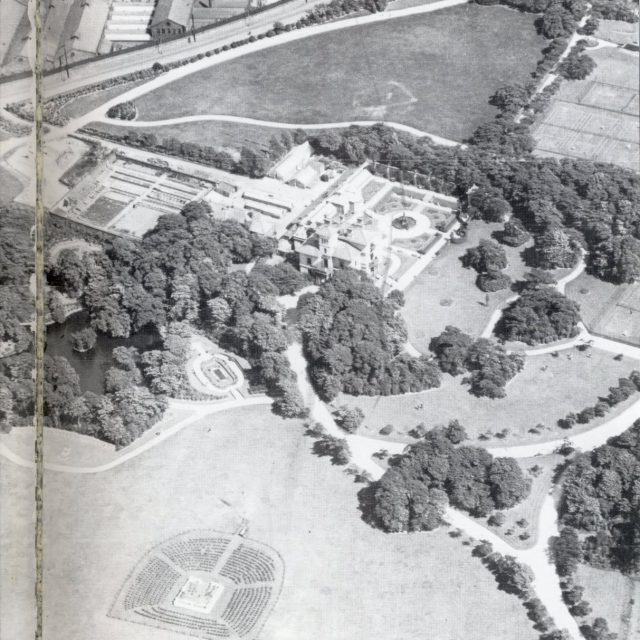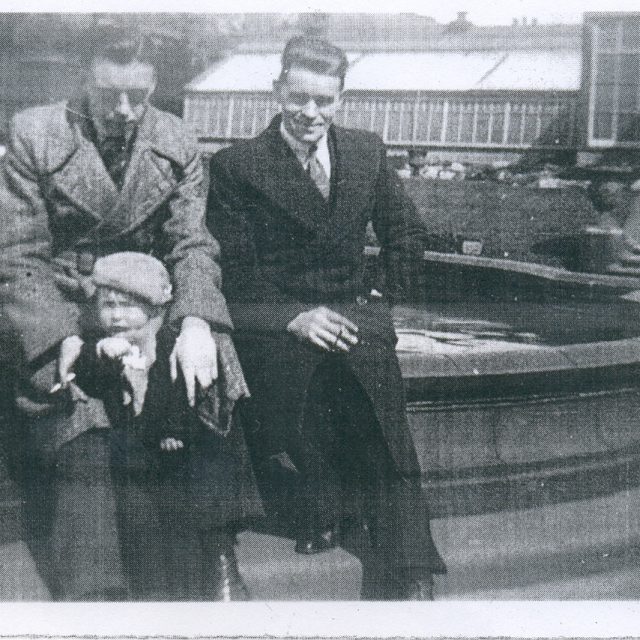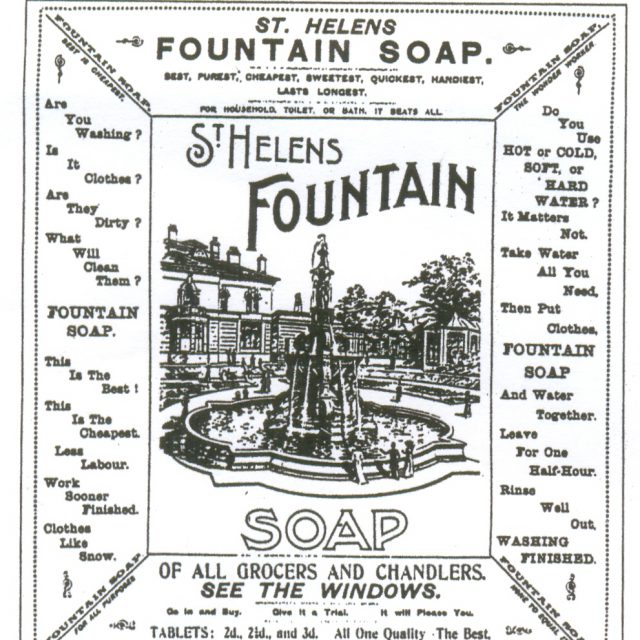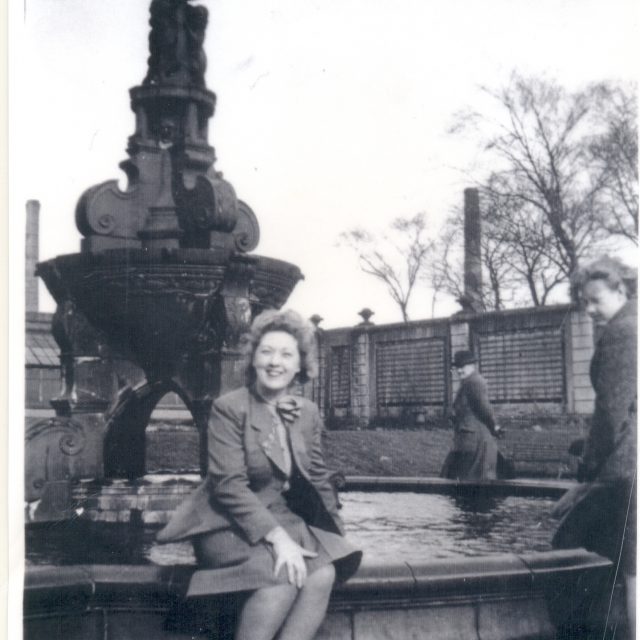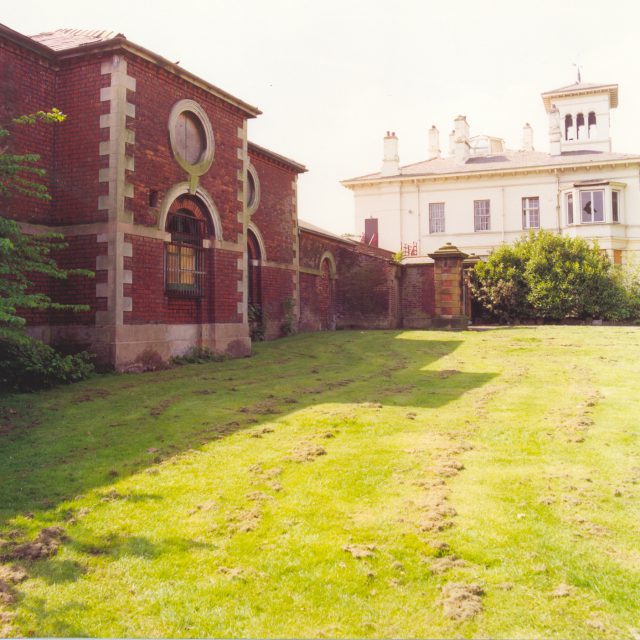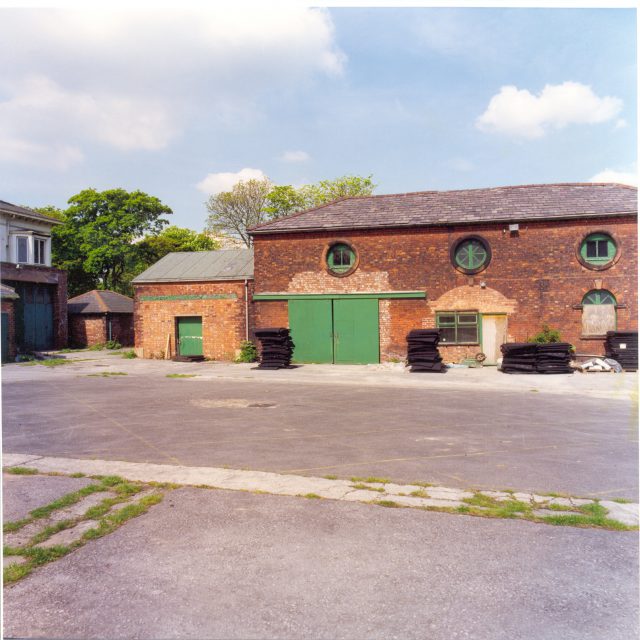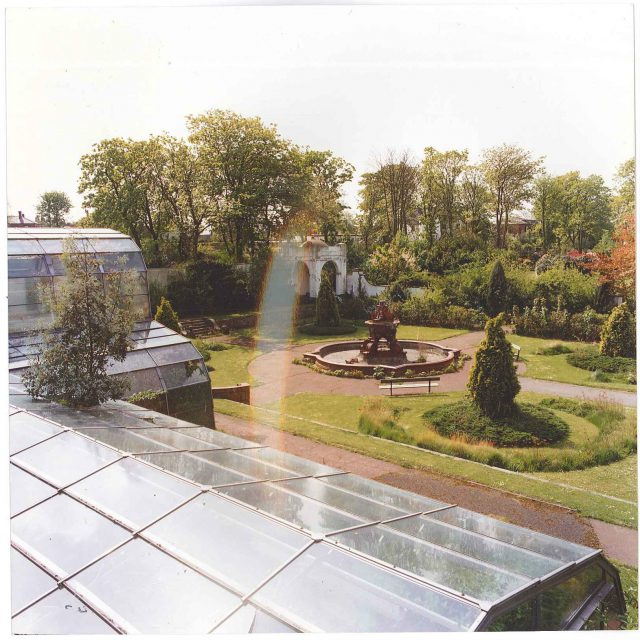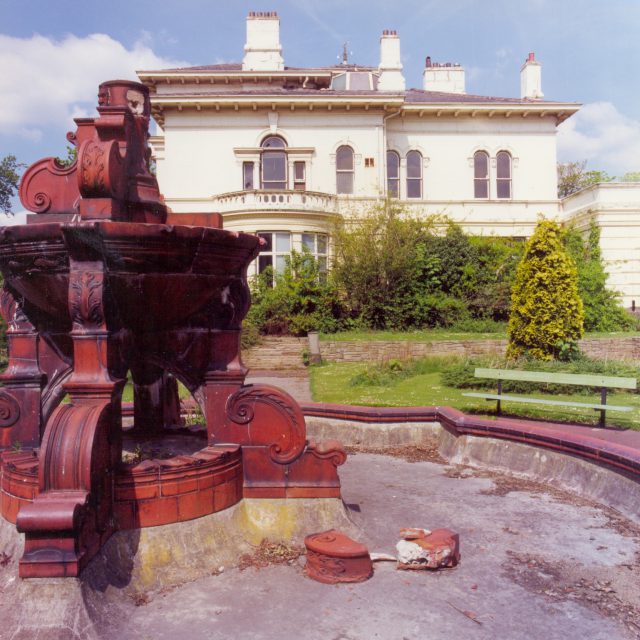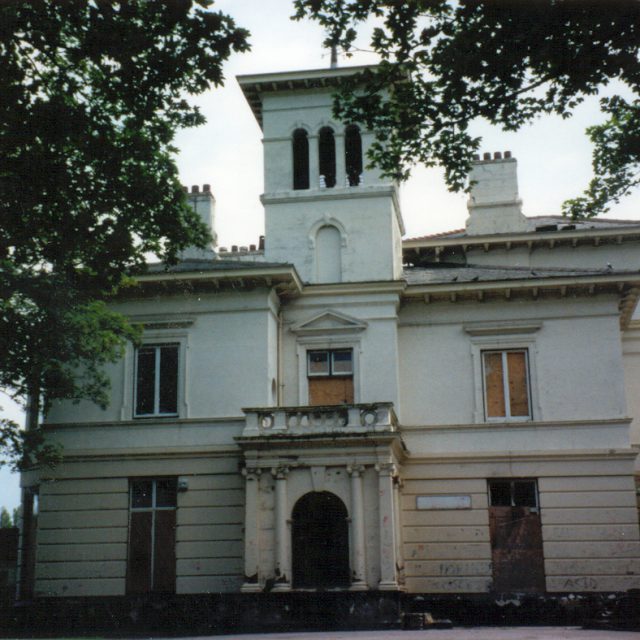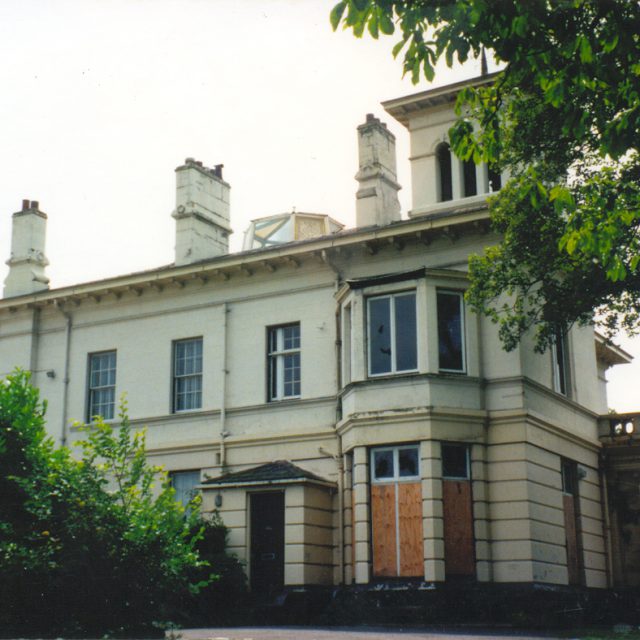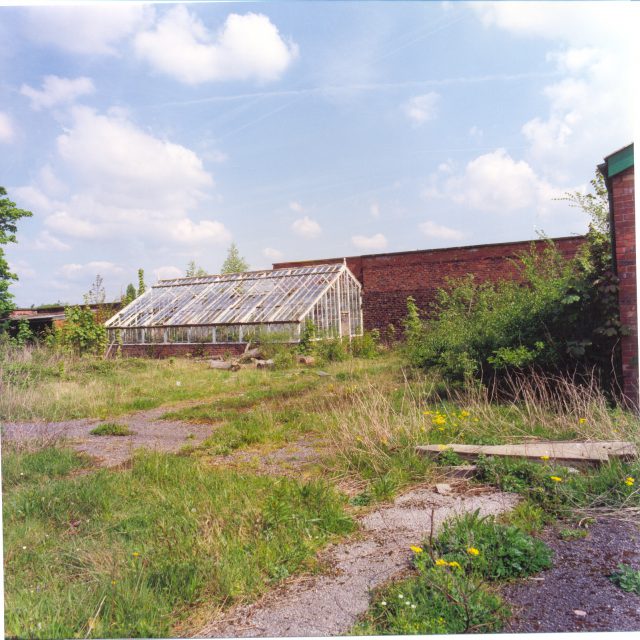It was John Andsell, a solicitor in the small but rapidly expanding town of St Helens, who requested the building of Cowley House circa 1850. Still under fifty years of age, Andsell was already quite successful. The brewing and coal owning Speakman family had become his in-laws when, after his work partner Richard Speakman died, he married Richard’s widow. Initially John Andsell and his wife lived in a comfortable house with a large garden on Greenbank, where the former Sandfield Crescent joined Liverpool Road. However, small houses were crowding that area, made smoky and malodorous by nearby pottery, tannery, chemical and gas works.
The chance to move on came in 1847 following the death of John Speakman (Richard Speakman’s brother). John Speakman had owned the land on the northern side of Cowley Hill, which John Andsell (his executor) swiftly purchased.
Set within open countryside, John Speakman’s former fields were swiftly planted to form an estate with Cowley House at its heart. Money was lavished on the new build which was designed to the Italianate style typical of Victorian opulence though unique within the neighbourhood. The building’s architect is unconfirmed; however, is thought to have been Charles Reed, an architect who was Vice Chair at a dinner given by John Andsell to celebrate the building’s completion. This dinner was held at the Talbot Hotel (now “The Sportsman’s”). That same evening sixty-four workmen were provided with a celebratory supper.
Cowley House was very much a Victorian gentlemen’s residence. It’s imposing entrance porch led to a spacious central atrium with elegant Italian tiled floor, ornate staircase and beautiful lantern skylight. Downstairs, the library, with its legal, literacy and religious books, also contained copies of “The Farmer Magazine”. In the dining room, to avoid lapses in Mrs Ellis’ “Social Distinctions” etiquette, twelve could sit comfortably at the 17’6 x 5’3 dining table, after which, the group would adjourn to the drawing room with its pianoforte. Upstairs were six first floor bedrooms and a dressing room. Four more bedrooms were on the second floor, two (thought to be the servants quarters) were situated off a top landing. Each room had its own washstand and the servants would have had much carrying of hot water to do given that, typical of 1885, only one bathroom had been installed!
Cowley House remained John Andsell’s home until his death in 1885, after which his widow moved on to live in Rainhill with her sisters. The house and grounds were bought in 1886 for £11,000 by St Helens Corporation and the contents of the house and outbuildings were auctioned. At this time, changes were made including (thanks to a gift of land from David Gamble) a new entrance (St Mark’s Gate) at the corner of North Road and Rutland Street, making the proposed new ‘park’ much more accessible to the townsfolk. New flower beds were stocked with plants brought from the greenhouses. Seats were provided and bent hoops were installed to keep wayward feet off the grass. A much enlarged lake and a bandstand were envisaged though not built at the time. The new ‘Cowley Hill Park’ opened in June 1886; however its name was short lived. To commemorate the Queen’s Golden Jubilee in 1887, David Gamble renamed it ‘Victoria Park’.
Ten years later the lawn area nearest the house was transformed by the current terracotta fountain which presented by Sir Henry Doulton along with other gifts including two chairs which were known to local youngsters as the King’s chair and Queen’s chair. By this time, the house had become a museum, opened in 1892, and its collection was enhanced by loans from the Victoria and Albert Museum and by gifts from local donors.
Its magnificent stuffed tiger (now long ago recycled to repair patches to other museum animal exhibits) lives on in the memory of the children and adults who loved the Museum and mourned its closure in 1966 when the exhibits were transferred to the Gamble Institute. During the house’s museum days, two flats had been created on the upper floors; however, these rooms are no longer accessible except for maintenance work.
Following closure of the museum, the building became the base for St Helens Parks and Cemeteries; however, was then abandoned and sadly become increasingly derelict. Fortunately in 1993/94 a local charity – Age Concern St Helens – purchased the house and immediate grounds (including formal gardens, courtyard, outbuildings and parking areas) and set about restoring this beautiful venue.
With restoration work complete (thanks to many volunteers), The Mansion House became an ‘Active Age Centre’ offering a range of services for older people (thanks to partnership working and support from external funding). Since then, The Mansion House has remained with the charity despite a merger with two other local Age Concern partner organisations in 2008 (resulting in a name change to Age Concern Mid Mersey) and a subsequent working name change to Age UK Mid Mersey in 2009.
The venue’s ‘active age’ function can still be seen today through Positive Living Community Day centres, craft and healthy living activities as well as other projects for older people which operate from The Mansion House. However, the financial climate over recent years has seen a shift in the venue’s role such that it has essentially become a social enterprise arm of the charity and now opens its doors to all ages as a community hub for the general public and businesses to use as a special place to celebrate, meet and attend lifestyle classes.
In 2013, a partnership between Age UK Mid Mersey, Friends of Victoria Park and St.Helens Council resulted in a successful bid for Heritage Lottery Funding for redevelopment of the park, including The Mansion House orangery and fountain.
This restoration work was completed in time for the grand opening by the Mayor (Councillor Geoffrey Pearl) on Tuesday, 19th August 2014. These works included the introduction of a Victorian-style bandstand (almost 25 years after first envisaged), restoration of the park pond, re-establishment of tennis courts, redevelopment of The Mansion House fountain and gardens, and the building of a brand new state-of-the-art orangery in the style of a previous orangery at the site.

